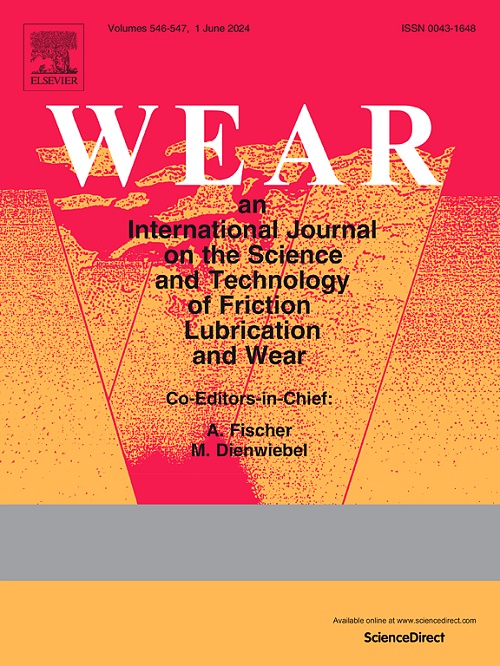Particle erosion behavior of La2(ZrxCe1-x)2O7/YSZ double ceramic layers TBCs deposited by electron beam-physical vapor deposition
IF 5.3
1区 工程技术
Q1 ENGINEERING, MECHANICAL
引用次数: 0
Abstract
La2(ZrxCe1-x)2O7/YSZ (LZC/YSZ) double ceramic layers (DCL) thermal barrier coatings (TBCs) have attracted extensive attentions due to their low thermal conductivity and good thermal stability. Particle erosion of DCL TBCs is one of the typical degradation patterns. Here, LZC/YSZ DCL TBCs samples deposited by electron beam-physical vapor deposition (EB-PVD) underwent solid particle erosion test for different time. Characterization of microstructure evolution is implemented using correlative methods, which links together the observations and analysis from X-ray diffraction (XRD), scanning electron microscopy (SEM) and white light scanning interferometry (WLSI). The erosion rates for LZC/YSZ DCL TBCs were determined after exposure to varying durations of erosion. During the initial erosion stages, the predominant degradation mechanism involved the removal of ceramic material. This was attributed to the compaction and cracking of the near-surface columns, causing a progressive thinning of the coating in a layer-by-layer manner. This pattern of degradation also occurred at the LZC/YSZ interface, indicating a relatively good adhesive bond between the LZC and YSZ layers. In the later stages of erosion, the formation of deep cracks, erosion craters, and the emergence of horizontal cracks within the bottom of YSZ layer contributed to block spalling, consequently increasing the erosion rate.
求助全文
约1分钟内获得全文
求助全文
来源期刊

Wear
工程技术-材料科学:综合
CiteScore
8.80
自引率
8.00%
发文量
280
审稿时长
47 days
期刊介绍:
Wear journal is dedicated to the advancement of basic and applied knowledge concerning the nature of wear of materials. Broadly, topics of interest range from development of fundamental understanding of the mechanisms of wear to innovative solutions to practical engineering problems. Authors of experimental studies are expected to comment on the repeatability of the data, and whenever possible, conduct multiple measurements under similar testing conditions. Further, Wear embraces the highest standards of professional ethics, and the detection of matching content, either in written or graphical form, from other publications by the current authors or by others, may result in rejection.
 求助内容:
求助内容: 应助结果提醒方式:
应助结果提醒方式:


